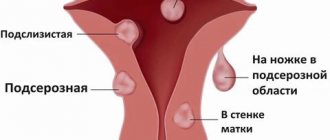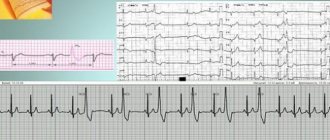Breast cancer is the most common malignant tumor in women. This type of cancer ranks first in mortality from cancer among the female population. The risk of developing it increases with age. Breast cancer in young girls (under 35 years of age) is rare, but has a worse prognosis.
The most common sign of breast cancer is the presence of a painless lump that a woman notices during a self-examination. Other symptoms are skin changes (orange peel), nipple discharge and breast pain. According to statistics, only 10% of tumors in the mammary glands are malignant.
By the time breast cancer can be felt, the tumor already exceeds 1 cm. Earlier detection of the disease is carried out using mammography.
Treatment for breast cancer depends on the stage of the disease, and the most important information is the size of the tumor and its spread to the lymph nodes. Early detected breast cancer (by chance, on mammography, not yet palpable) has a better prognosis.
Treatment for breast cancer consists of surgery to remove the breast (mastectomy), radiation therapy (radiation therapy), chemotherapy, and hormone therapy. The choice of treatment method depends on the stage of the disease.
Signs of breast cancer
Signs of breast cancer in most cases are detected within the breast itself (in the early stages), with the exception of aggressive manifestations of cancer that have spread to distant organs, lymph nodes and tissues (late stages). If the tumor has penetrated beyond the breast, the clinical picture will look different. Migration of cancer cells is possible through the human lymphatic and circulatory system .
It should be noted that many of the symptoms below are not unique to breast cancer. However, in any case, if you have one or more of these signs, you should immediately contact an oncologist for an in-depth diagnosis. When diagnosed with breast cancer, symptoms and treatment will be determined by the time the patient seeks medical help.
Breast reconstruction after mastectomy (breast removal)
There are several breast reconstruction techniques, and the choice depends on the underlying disease and the age of the patient.
Primary breast reconstruction is performed simultaneously with the operation of the underlying disease, and secondary reconstruction means a subsequent operation after some time.
Indications for primary breast reconstruction are highly motivated patients in the first and second stages of the disease with an appropriate ratio of tumor size to breast size.
Contraindications to primary breast reconstruction include diabetes, obesity, smoking, cardiovascular disease and mental disorders. Chemotherapy and radiation therapy are not contraindications for primary breast reconstruction.
Breast reconstruction can be performed with a silicone implant, a tissue expander, or using your own tissue.
Symptoms of breast cancer
You should do a regular home breast exam between your doctor's visits every month, paying special attention to the symptoms listed below.
The most common symptom of breast cancer is the appearance of a new lump or lump. A painless, firm lump with an irregular outline is more likely to be cancerous, but malignant breast tumors can also be tender, soft, or round. Some women complain of obvious pain. Accordingly, if you have a new lump, lump or other change in the condition of the mammary glands, you need to be examined by an experienced specialist.
Other potential symptoms of breast cancer include:
- swelling of the whole mammary gland or part of it (even in the absence of lumps);
- the appearance of dimples on the skin (the skin looks like an orange peel);
- pain in the breast or nipple;
- nipple retraction;
- redness , dryness, flaking, or thickening of the skin of the breast or nipple;
- nipple discharge (other than breast milk);
- enlarged lymph nodes (sometimes breast cancer spreads to the lymph nodes in the armpit or around the collarbone and forms a lump there before the primary tumor in the breast grows large enough to be felt).
Although any of these symptoms may indicate a disease other than breast cancer, unusual symptoms should prompt you to see a doctor. Only a specialist can identify the real cause of your symptoms.
Remember that breast self-examination for signs of cancer does not replace regular mammograms and other screening procedures. Screening can detect breast cancer before symptoms appear. Early detection of cancer increases the chances of successful treatment.
Make sure you are healthy
But first of all, self-examinations that will allow you to suspect a problem. A girl or woman can palpate (feel) her mammary glands herself. This should be done regularly, noting any changes, and if you have any doubts, or even more so discomfort and pain in the chest, consult a doctor immediately.
Such self-examinations are especially important for girls and women who are included in one of the risk groups:
- there are relatives who have been diagnosed with this;
- hormonal imbalances were recorded;
- there were or are benign formations;
- menstruation began early (before 12 years of age);
- failed to get pregnant;
- had abortions;
- the woman refused breastfeeding;
- menopause occurred late (after 55 years).
When examining yourself, it is important to follow some rules. Firstly, do this in daylight, standing in front of a mirror, undressed to the waist. Secondly, carry out self-examination regularly, once a month - on the 5th–12th day of the menstrual cycle. And older women are recommended to examine their mammary glands monthly on the same day.
Click to enlarge
Heredity factor as a sign of cancer
One of the mandatory actions in relation to a patient with breast cancer is to build his family tree and determine the need for genetic testing for the presence of BRCA genes . BRCA1 and BRCA2 are autosomal dominant genes that can be a sign of the development of breast cancer in up to 80% of relatives. There are several reasons to suspect the presence of these genes in the family:
- cases of cancer at a young age ;
- bilateral breast cancer , when after one breast is affected, the tumor forms in the second after some time;
- cases of breast cancer in men.
All of the above factors are a reason to conduct genetic testing to build a family tree for three generations and determine the mathematical probability of carrying the BRCA genes. Siblings and children of a carrier woman have a 50% chance of inheriting the gene . Thus, genetic testing is an effective method for preventing breast cancer.
Bibliography
- 1. Fazilova Sh. M., Khusainov A. Sh., Karimov F. M. Breast cancer and the causes of its occurrence // Current scientific research in the modern world. – 2021. – No. 4-6. – pp. 134-136.
- 2. Zinnatullina G. F. et al. Breast cancer Genetic risk factors for the development of the disease // Ural Medical Journal. – 2007. – No. 12. – pp. 6-15
- 3. Fedorenko I. I., Obukhov A. L., Gidranovich A. V. Diagnostic value of clinical symptoms in breast cancer // Clinician. – 2007. – No. 1
- 4. Saribekyan E.K. Infiltrative-edematous breast cancer (surgical aspects, pathogenesis, diagnosis, classification). Dissertation ... Doctor of Medical Sciences: 01/14/12 / Federal State Institution "Moscow Research Oncology Institute". Moscow 2013
- 5. Kuligina E. Sh. Epidemiological and molecular aspects of breast cancer // Practical Oncology. – 2010. – T. 11. – No. 4. – pp. 203-216
- 6. Bekher O. A. Neuropsychiatric disorders in women suffering from breast cancer // Siberian Journal of Oncology. – 2008. – No. S1
- 7. Magarill Yu.A., Vasilchenko I.L., Elova T.I. Diagnosis of breast cancer. Guidelines. Kemerovo, 2004
- 8. Semiglazov V. F. Surgical treatment of breast cancer (history and modernity) // Practical Oncology. – 2002. – T. 3. – No. 1. – pp. 21-28
- 9. Semiglazov V. F. Strategic and practical approaches to solving the problem of breast cancer // Issues of Oncology. – 2012. – T. 58. – No. 2. – pp. 148-152
- 10. Letyagin V.P., Vysotskaya I.V., Kim E.A. Risk factors for the development of breast cancer // Tumors of the female reproductive system. – 2006. – No. 4
- 11. Balazs I Bodai; Phillip Tuso. Breast Cancer Survivorship: A Comprehensive Review of Long-Term Medical Issues and Lifestyle Recommendations. Perm J. 2015 Spring; 19(2): 48–79
- 12. V Craig Jordan. The New Biology of Estrogen-induced Apoptosis Applied to Treat and Prevent Breast Cancer. Endocr Relat Cancer. Feb 2015; 22(1): R1–31
- 13. Suzanne A Eccles et al. Critical research gaps and translational priorities for the successful prevention and treatment of breast cancer. Breast Cancer Res. 2013; 15(5): R92
Local cancer: symptoms
The clinical situation in this case can develop in four different directions:
1. The tumor is located in the middle part of the chest , in its glandular part. It is usually first discovered when a woman takes a bath or shower and notices a lump in one of her breasts. Immediate contact with a breast oncologist in such cases allows you to diagnose cancer even before the first clinically significant symptoms appear.
2.
The tumor is located near the nipple .
This localization of the tumor has two characteristic symptoms: deformation and retraction of the nipple (this is especially noticeable in comparison with the other nipple) and bloody discharge from the nipple. 3. The tumor has formed under the skin . In such cases, it manifests itself as a non-healing and unpleasant-smelling (due to bacterial infection) ulceration on the skin or “orange peel”, the appearance of which is caused by the accumulation of fluid due to compression of the lymphatic vessels.
4. The tumor lies deep in the thickness of the glandular tissue near the pectoral muscle, partially growing into it. A sign of this location of the tumor is a distinct asymmetrical shape in a bent position at the waist.
Check the price with a specialist
Breast cancer by lymphatic system
Spreading through the lymphatic vessels, the tumor can penetrate the axillary lymph nodes. In this case, the following symptoms are observed:
- enlargement of lymph nodes up to clearly palpable nodules
- accumulation of cancer cells in the armpit area
Less commonly, the tumor may migrate through the internal thoracic duct, which runs under the breastbone. Symptoms: since the tumor affects deep-lying lymph nodes, it can only be detected using instrumental diagnostic methods .
An even rarer case is a lesion of the supraclavicular lymph node, which manifests itself as a palpable lump in the area between the lower part of the neck and the upper rib. As it grows further, it can put pressure on the brachial plexus, causing loss of sensation in the fingers or shooting pain in the shoulder.
Stages
- Stage 0. A neoplasm with a diameter of up to 1 cm is in a pre-invasive form, i.e. does not metastasize even to neighboring tissues. There are no symptoms, the tumor can only be detected with a preventive breast ultrasound.
- Stage 1. The tumor grows up to 2 cm, but has not yet grown into other tissues and does not metastasize. There are clear boundaries of the changed tissue, there are no characteristic symptoms.
- Stage 2. Breast carcinoma grows up to 5 cm in diameter and affects the axillary lymph nodes, but there are no metastases to other organs yet. Pronounced clinical signs of the disease appear.
- Stage 3. The size of the malignant neoplasm exceeds 5 cm, and active metastasis begins in the lymph nodes, initially in the regional ones. Inflammation of the lymph nodes develops, and immunity drops sharply. Treatment does not always have a positive effect, and the likelihood of relapse is high.
- Stage 4. The tumor fills the entire volume of the mammary gland, metastases actively spread to distant organs, and health rapidly deteriorates. Treatment is aimed at maintaining vital functions and reducing the most severe symptoms.
Symptoms of breast cancer in the circulatory system
If the tumor spreads through the blood vessels, then most often metastases are found in the following organs and tissues:
- bones. Symptoms: large metastases can disrupt the integrity of the periosteum, causing severe pain. Bone mineral density decreases, leading to fractures. A special case is a fracture of the vertebrae, which results in the so-called. compression (radicular)
- lungs. Symptoms: when they enter the lungs, tumor cells usually form several separate groups that form multiple metastases. Their development causes depression of pulmonary function, manifested by shortness of breath (dyspnea). When the bronchi are damaged, a painful dry cough develops (if nearby blood vessels rupture - cough
- brain. Symptoms: as metastases grow, they begin to put pressure on neurons, which causes their irritation (resulting in seizures) or partial shutdown (resulting in loss of mobility, loss of vision, sensitivity, etc.). Since the skull is a limited space, there comes a time when it becomes too crowded for neurons and tumor cells. A sign of this is headaches with gradually increasing intensity.
- liver. Symptoms: once in the liver, tumor cells begin to grow rapidly, destroying hepatocytes, as a result of which the level of transaminases in the blood sharply increases (this is clearly visible in a laboratory blood test). When the tumor compresses the bile ducts, bile accumulates, and the patient’s skin acquires a yellow tint.
How the quality of medications affects the cure for breast cancer
The treatment protocol for breast cancer includes chemotherapy and sometimes hormonal and targeted drugs. At the same time, the quality of drugs is crucial for the prognosis of the disease. To avoid counterfeiting, it is best to purchase drugs for cancer treatment in Israel.
- In Israel you will not be sold counterfeit medicines.
The Israeli Ministry of Health is the guarantor of the authenticity and high quality of medicines. It organizes inspections of pharmacies and control purchases of drugs. At the same time, pharmacies and pharmacists bear liability (including criminal liability) for the sale of low-quality drugs. - It does not take long for new drugs to be approved in Israel.
Licensing of drugs in this country is organized in such a way that all effective drugs appearing in the world are quickly licensed and introduced into widespread clinical practice. - The Israeli company TEVA is a leader in the global pharmaceutical industry.
Its products are used in 60 countries.
How can I purchase Israeli-made medicines?
- After examination in Israel.
If you undergo diagnostics at the Ichilov Cancer Center, the doctor will prescribe medications for you, which you can purchase at an Israeli pharmacy. - In the country where the patient lives.
The telemedicine program developed at the Ichilov Cancer Center allows a patient from abroad to receive a video consultation with an Israeli doctor and a treatment protocol without leaving home. At the patient’s request, the oncology center will send him the prescribed medications (home delivery is possible).
Why is it worth treating breast cancer in Israel, at the Ichilov Cancer Center?
- Accurate diagnosis.
The latest diagnostic methods, including PET-CT and sentinel lymph node biopsy, allow Israeli specialists to accurately determine the stage of the disease and select the correct treatment program. - World-famous doctors and a personalized approach to treatment.
At the Ichilov Oncology Center, breast cancer treatment is carried out by leading Israeli oncologists, including Professor Moshe Inbar, a doctor with 40 years of experience and the author of more than 20 scientific papers. The professor selects individual treatment protocols for patients that correspond to the characteristics of the disease. - The latest equipment.
The oncology center uses the following for the treatment of breast cancer:
- linear accelerators Synergy S and Novalis TrueBeam STX, which allow delivering high doses of radiation to the tumor, while protecting healthy tissue from radiation;
- Marginprobe is a device that makes it possible to remove a tumor with “clean edges.”
Treatment
The choice of treatment methods depends on the form of the disease and its stage at the time of treatment. Thus, g3 breast carcinoma is characterized by rapid progression, but this tumor is extremely sensitive to drugs. Therefore, g3 and g4 tumors are usually treated with chemotherapy.
In contrast, with ductal carcinoma in situ of the breast, as with other forms of tumor in situ (without proliferation), the most effective method is surgical removal of the malignant tissue. Depending on the type and size of the tumor, the type of operation is selected:
- lumpectomy – removal of a tumor along with a section of healthy tissue, used for small pathological lesions;
- mastectomy - removal of the entire mammary gland, if necessary, with axillary lymph nodes and part of the muscle tissue;
- biopsy - surgical excision of a lymph node, often performed with its subsequent removal;
- reconstructive surgery - restoration of the shape of the breast, often performed simultaneously with a mastectomy and with the use of implants.
Radiation therapy is usually used for diffuse forms of the disease, since these cases are inoperable. In addition, it is prescribed after surgical treatment to destroy cancer cells remaining in the mammary gland.
With a high risk of relapse, patients are prescribed cytostatics. Chemotherapy drugs are prescribed:
- for the destruction of small tumors;
- to curb growth;
- to reduce the boundaries of a large tumor before surgery;
- in the presence of metastases - to stop their spread.
In some cases, patients are prescribed hormonal therapy. First of all, this applies to postoperative conditions, but hormonal drugs are often prescribed to reduce the size of the pathological lesion. Sometimes hormone therapy becomes the only possible method.
Biological therapy is a relatively new technique based on the inclusion of natural immune mechanisms to combat malignant cells. Anticancer drugs are:
- substances that prevent the proliferation of blood vessels in tumors;
- monoclonal antibodies aimed at destroying cancer cells;
- interferons;
- radioimmune drugs.
Biological drugs are often combined with chemotherapy.
Where to go?
The best option is to get diagnosed in Israel. Thanks to the skill of doctors and the latest equipment, Israeli oncologists often revise the diagnoses made by their colleagues from abroad. As a result, some of our patients are surprised to learn that they do not have breast cancer at all - it also happens that the symptoms indicate another disease, much less dangerous.
We suggest you contact oncology and undergo diagnostics in Israel , with leading oncologist professors. Examination methods may vary. First, you will be examined by a doctor, then a mammogram will be scheduled. A biopsy determines how the tumor has spread. Next, an MRI is performed to clarify the data from other examinations. Then the final diagnosis is made.
just 4 days you will receive an accurate answer as to whether you have breast cancer, and if not, you will be told what the characteristic symptoms and signs indicate. We will draw up a treatment program that can begin in our clinic within a few days.
Forecasts
The success of treatment depends on many factors, but the main influence is the invasiveness and stage of tumor development. The prognosis for stage 0-1 breast carcinoma is almost always favorable, provided that treatment is started immediately after detection of the disease. At the second stage, the five-year survival rate, according to statistics, is up to 75%. In the third stage, the statistical indicators are worse, but the chances of recovery are quite high and amount to 41%. And even for patients with stage four breast cancer, there is still a chance of getting rid of the tumor, provided proper treatment and the will to live: their five-year survival rate is 11%.
Cost of breast cancer treatment
The duration of treatment at Ikhilov for breast cancer on an outpatient basis is 3-4 working days.
Prices for cancer treatment set by the Israeli Ministry of Health at the Ichilov Cancer Center:
| Breast cancer treatment procedures | Price |
| Breast biopsy | 1761$ |
| Examination by the leading oncologist of the oncology center | 512$ |
| Mammography | 246$ |
| PET-CT | 1488$ |
| Ultrasound of the mammary glands | 408$ |
| Chemotherapy course | 1270$ |
| Segmental mastectomy | 5308$ |
| Sectoral mastectomy | 13211$ |
| Bilateral mastectomy | 10231$ |
| Mastectomy unilateral | 7750$ |
| Radiation therapy | 17007$ |
You can take the first step towards recovery right now. To do this, fill out an application and one of our doctors will contact you within 2 hours.
Or call: +972-3-376-03-58 in Israel and +7-495-777-6953 in Russia.







